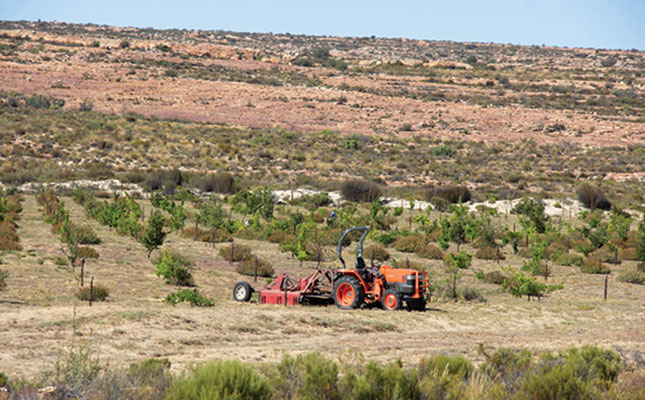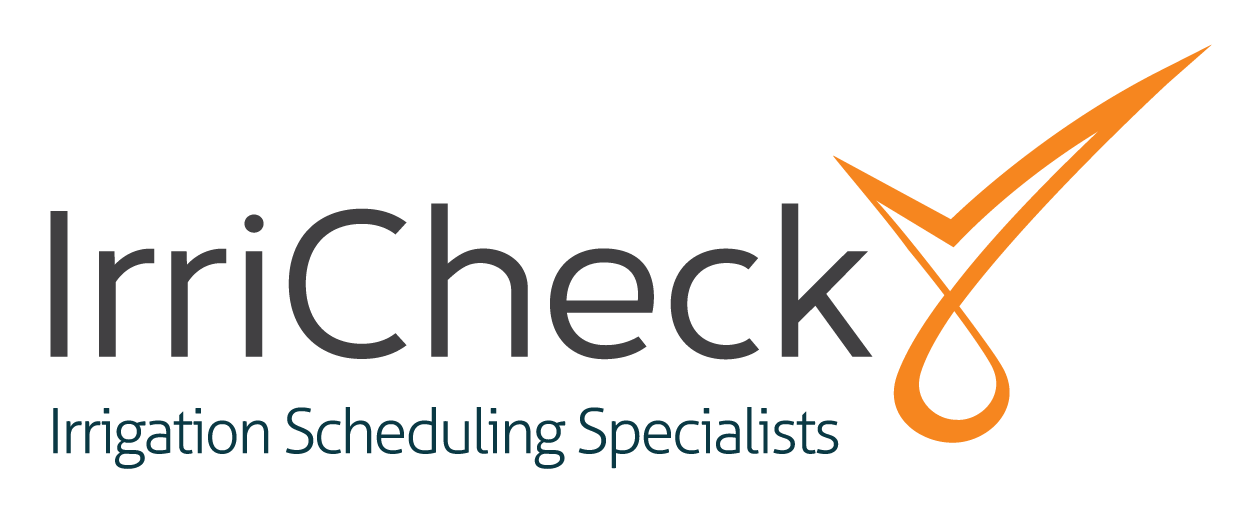
Truffles: black gold for South African farmers
Truffle farming in South Africa began more than 70 years ago, albeit on another continent. In the Black Forest in south-western Germany, Volker Miros was foraging mushrooms with his opa. Meanwhile, in Sea Point, Cape Town, Angela Wilson was growing up in a house called ‘Woodford’.
Angela would later marry Volker, and her childhood home would lend its name to their business, Woodford Truffles SA, which Volker established in 2005, and of which Angela is the financial director.
Volker has become known as the truffle guru of South Africa, and it’s easy to see why. He has 22ha under the crop (7ha in production) on his farm Groenfontein, an hour’s drive from Ceres, and has spent 12 years researching, travelling, reading and testing most aspects of truffle farming. In addition, he has partnered with 10 truffle producers across the country.
Volker and Angela’s three children are also involved in the business: Paul consults with farmers and handles marketing, Sean assists with irrigation, and Kathi and her husband Brian Bullard run the family farm’s private nature reserve.
The family also runs Saanen milk goats and a herd of Nguni cattle, and produces spelt, olives, and wine grapes on Groenfontein.
The choice of truffle variety was relatively easy for Volker, as a wealth of knowledge on the commercial cultivation of the black winter truffle (Tuber melanosporum) was already available.
While it fetches high prices in Europe, the white winter truffle (T. magnatum) has only recently been successfully inoculated onto tree roots for commercial cultivation.
In South Africa, the black winter truffle is the best choice for cultivation, as it is the most sought after in restaurants after the rare white truffle. It is also harvested in winter, so South African producers can supply the gourmet markets in the Northern Hemisphere during their off-season.
Cold units and soil
Located in the Koue Bokkeveld, Groenfontein attains an average of 1 100 cold units a year.
“When interested farmers approach us about truffle production, the first thing we do is check their farm’s location and link that to a map of cold units in South Africa. Successful black truffle production requires 800 cold units and above,” explains Paul.
Another important factor in black truffle farming is that the soil needs to be alkaline,
at a pH of 8,5. For this reason, calcitic lime must be added if the soil is too acidic, as it increases the soil’s pH. Dolomitic lime should never be used for this purpose, as it causes an excess of magnesium in the soil, which can be detrimental to the mycorrhizae, or the ‘fungal roots’.
Truffles are the fruiting bodies of mycorrhizae fungi, which attach to the roots of the host tree. The fungi scavenge for nutrients in the soil, which they supply to the tree. In turn, the mycorrhizae obtain carbohydrates from the tree’s ability to photosynthesise.
Truffle trees, English oaks and holly oaks
To grow, truffles require a symbiotic relationship between the mycorrhizae and the roots of specific trees. The farmer must therefore create the ideal relationships between fungi and tree roots.
“We also inoculate English oak but it is more susceptible to mildew, unlike the holly oak. Natural and organic remedies like neem oil [an antifungal agent] and even diluted milk are used to treat mildew.
“We recommend using drop sheets to prevent the neem from making contact with the soil, leaving it to dry after spraying the mildew, and then removing it,” says Paul.
Prospective truffle farmers should bear in mind that they don’t need be too concerned with feeding the trees, but rather caring for the fungi living on their roots. On Groenfontein, a block of approximately 7ha is interplanted with truffle-inoculated Spanish rockrose (Cistus spp.) as companion plants to the oak trees.
The rockrose also yields truffles, but due to its bushy growth, harvesting the fungi is difficult.
Planting
Black winter truffles are the result of the inoculation of T. melanosporum spores onto the roots of young oak saplings, which is performed under sterile conditions in the on-farm lab at Groenfontein.
After inoculation, the saplings are held for 18 months in a quarantine nursery to prevent cross-contamination with other fungal species. After at least three root samples have been taken to ensure that the fungus has been inoculated and is viable, the trees are ready to be transplanted to the truffle orchard, known as a truffière.
“It’s important to plant trees during [their] dormancy in late winter,” says Volker.
“This ensures that the trees ‘wake up’ in their new environment and get a full season’s growth.”
The Miros family recommends planting 625 trees/ha at a density of 4m x 4m. Soil conditioning, cover crop improvements, and the establishment of irrigation need to be done a year prior to planting.
“Lime is a costly input, as some soils need up to 90t/ha to achieve a pH of 7,9 to 8,” explains Paul. “There are also only a few calcitic lime sites in the Western Cape, so transport costs can be huge. Lime needs to be incorporated [into the soil] to a depth of about 40cm, which requires deep ripping equipment.”
Cover crops are sown between the oak trees and comprise a mix of grass, such as fescue, and legumes.
Paul suggests that farmers use calcitic lime pebbles as mulch, rather than organic matter like bark or wood chips, as the latter lowers soil pH and can introduce competitive fungal colonies.
Truffle pests and predators include grubs, slugs, millipedes, porcupines and wild pigs, and diseases such as mildew can be a problem for English oak trees.
Harvesting
Truffles are harvested six or seven years after the trees are planted, so patience and some bridging capital may be required to ensure a favourable outcome for the aspiring truffle farmer.
In South Africa, dogs are used to sniff out the truffles, as opposed to the traditional pigs. In mid-June, truffle hunters and their hounds hone their detection skills in the orchards.
When truffles are detected, the trees are marked with ribbons to indicate the position of the near-ripe truffles. The actual truffle ‘hunt’ starts at the beginning of July and can run until late August.
Any trainable dog can be used to hunt truffles. They are trained with truffle oil, and during hunting season track its aroma. They then indicate where truffles can be located; the fungi are ideally found between 15cm and 25cm below the surface.
When truffles are detected, they are dug out of the ground by hand, and the excess soil is removed before they are lightly scrubbed with a soft brush. Any defects are removed, and Kathi grades the truffles according to EU standards and quality requirements.
“We determine a price for the season by looking at the previous summer’s average prices in Europe and Australia,” says Paul. In 2020, truffles sold for an average price of €750/ kg (about R13 500/kg).
The fungi are sold within days of harvesting and are kept at 4°C throughout their journey from farm to restaurant.
Truffles have a shelf life of about 18 days, and while they freeze well, they lose much of their aroma in this way, so they are best eaten fresh.
Truffle farming in South Africa
Farmers who wish to grow truffles can form partnerships with Woodford Truffles SA,
through which they can buy inoculated trees at a reduced rate. Depending on the infrastructure that is already available on the farm, such as irrigation and ripping equipment, it can cost anything from R500 000 to R750 000 to establish 1ha of trees inoculated with the black winter truffle spores.
According to Paul, at least 5ha need to be established for a truffle operation to be profitable. “As South Africa’s truffle industry is still young and each orchard has different results, it’s difficult to predict an average yield per hectare for this country. Generally, only a few truffles are produced in the first year. Production should increase by at least 10kg/ha to 20kg/ha [from the second year],” he adds.
Woodford Truffles SA markets and sells truffles on behalf of its partner farmers, and takes a 30% commission that also covers technical support and grading. In total, South Africa has about 100ha under truffles, of which at least 50ha should yield truffles during the 2022 winter season.
Major truffle-producing nations include France at 20 000ha and Italy at 6 000ha, while Southern Hemisphere truffle producers include Australia (600ha), Chile (400ha) and New Zealand (170ha).
Email Volker Miros at info@woodfordtruffles.co.za
Source: Farmersweekly.co.za
